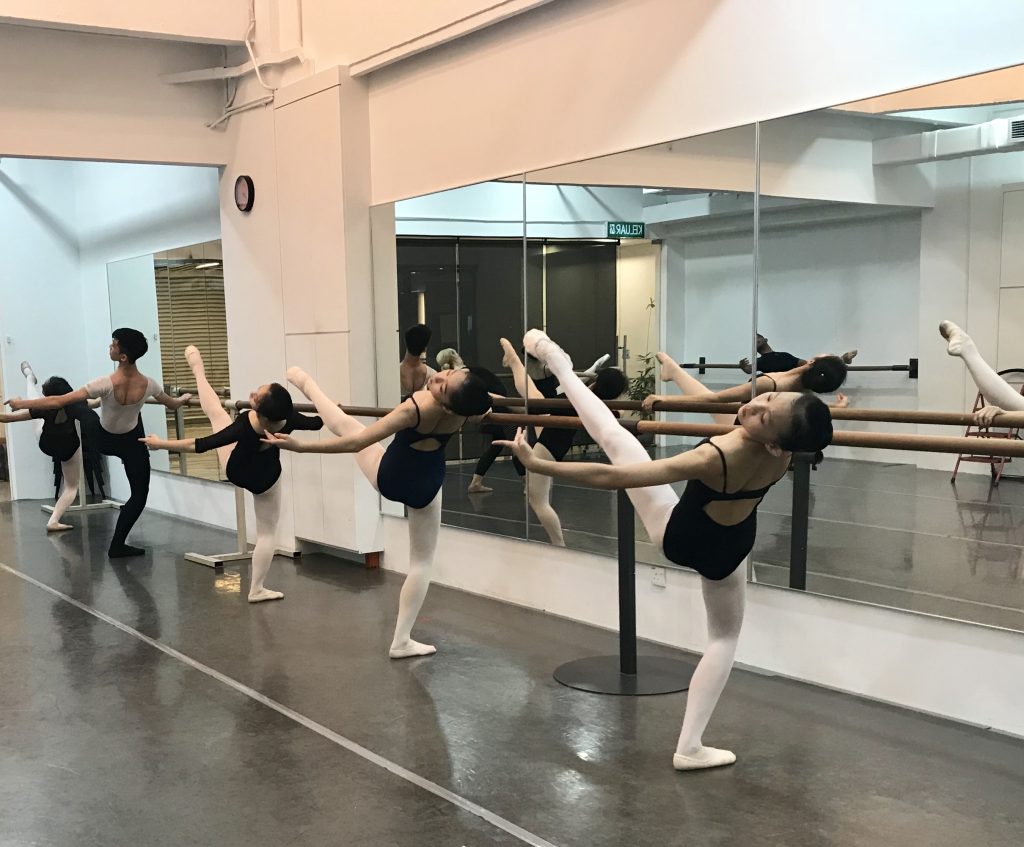
The curtains are raised but the air is still. An expected symphony of sounds— euphonious orchestra interspersed with roaring applause—turns out to be a cacophony of crickets’ chirps. Champions of classical ballet are seemingly abandoned in an ill-fated pas de deux. The age-old art form appears to be concealed from the eyes of spectators just as those silk slippers hide a ballerina’s calloused feet.
Sure, the scene is still in the springtime of its life. The theatrical dance, which originated in the 15th century during the Italian Renaissance era, only arrived on our shores, arguably, in the mid-sixties with the establishment of the Federal Academy of Ballet (FAB) in 1967 where aspiring dancers across the country flocked to for a chance at successful careers.
But that’s where the conundrum lies. Ballet has not been recognised as a contributor to the cultural fabric of our society. A career in ballet is as elusive as a butterfly and a successful one is near illusory. Most have to travel far from home just to have that dream in the realm of possibility. Those who remain grow into educators or branch out into other art disciplines.
So palpable excitement could be felt everywhere when the news broke that the country was welcoming its first professional ballet company, Ballet Theatre Malaysia (BTM), a couple of years back. It debuted with a bang: a triple bill program featuring the first act of Don Quixote led by award-winning dancer Yui Kyotani, Franz Schubert’s Impromptu and Max Bruch’s Violin Concerto.
Last year alone BTM presented two major productions that included Prosper Merímée’s Carmen and a reworking of Alice In Wonderland full-length ballet, signalling a continued upward trajectory. But the reality of life caught up with the company. It has since suspended all activities and is figuring out the best course of action moving forward — if it is moving forward.
“We need to think about how we can survive when we don’t even have the funding to hire the dancers,” says Choong Wan Chin, co-founder slash artistic director of BTM and FAB alumna. “I only have one principal dancer. What would happen if she gets injured? I can’t keep going like that. We need all these issues resolved before we push ahead.”
Choong has been a stalwart figure in the industry for the past 25 years. Her journey has taken her to some of the most revered ballet establishments and her varied career includes a stint at Singapore Ballet, previously known as Singapore Dance Theatre, and Shanghai Ballet Company, as well as a tenancy at Ena Ballet Studio in Japan, where she also co-founded Ena Ballet Studio Company.
After her homecoming in 2010, Choong staged no less than 10 sizeable productions, full-length repertoires and international galas at Istana Budaya under her brainchild KL Dance Works (KLDW) banner, previously known as Danceworks Production. She also collaborated with the Malaysian Philharmonic Orchestra in 2015 for the production of Carmen in Dance.

But to make any kind of headway in the ballet scene is a tall order even for someone as seasoned as Choong. Though her list of achievements does look impressive on paper, getting them to fruition took a lot from her. She particularly remembers the first time she tried to bring Carmen and Paquita Grand Pas Classique to the national theatre stage back in 2010.
“They didn’t really want it because the costumes were too ‘exposing’ and they wanted me to alter them. On top of that, they weren’t too keen about it being a charity event—something I have to do to fill the seats,” she recalls. Choong had to appeal to and educate the board on ballet itself, and convince them that the venture would be beneficial for both the venue and the art scene at large.
“Ballet is mainly a recreational activity here because it’s very underdeveloped,” she says when asked about the state of the local ballet scene. “I have been trying to take it to a higher level for the past 25 years, promoting this art form from the ground up, on the educational front, but it has progressed very little. I doubt it will ever rise to the level of other countries that truly appreciate it.”
Choong, taking no prisoners in expressing her dismay, goes further into the whole happening where dancers flee the scene and move abroad to pursue their career. “Because that’s where you learn things. There is nothing much for them here and there’s no such thing as “career advancement” after you hit a certain level,” she adds without missing a beat.

School of Thought
The ballet vet speaks from experience. She herself was shipped off abroad at the tender age of 14. The prestigious Walnut Hill School of Performing Arts, an institution in the United States where ballet is integrated into the school curriculum, became her home for two years. She then landed a coveted spot at Shanghai Dance School—post-apprenticeship at Singapore Ballet—shortly after.
What the unassuming Choong didn’t realise was that she was in for a rude awakening. All of those syllabus works that she thought had prepared her for the real world went out the window especially when she arrived in Shanghai. “Everything I did was wrong, even my weight! If you don’t have the ideal weight for ballet, you’re going to have a hard time because it’s a very strenuous undertaking.
“If you get your basics wrong, the foundation on which you build your skills and techniques, everything will start going sideways after a while,” she says in disbelief, even after all these years. “It was such a revealing time for me because I realised so many things—things that I had never learned before. That’s why I decided to model KLDW along that line.”
Indeed, the ballet standard in Malaysia is largely attached to the Royal Academy of Dance (RAD). The United Kingdom-based institution’s structured syllabus has been the beacon that hopeful ballerinas and danseurs look to for guidance. “It’s an exam-based system which is something that our people are familiar with,” says Choong recalling her time at FAB.
“The dancers get to take a test, be evaluated by an examiner from abroad, and at the end of the day, they get a signed paper that gives them a sense of validation, so both the students and their parents are happy with it,” she notes before adding that students may also partake in the training programme to become teachers if they wish.
“But I have learned different methods from my time overseas which I find more advantageous if you want to become a professional dancer. The RAD curriculum can only take you so far,” she says, simultaneously explaining her unconventional approach for KLDW. At the performance-based academy, there are no pre-planned examinations and certainly no report cards to show your parents.
“Your paper is not much of use unless it’s for extra credit for your college application or something. But beyond that, you don’t need the certification. If you want to go for a dance degree, you go to an audition to get into the program. The same thing if you want to enter a competition or to book a role in a stage production. They want to see your audition, not certification.”

Pretty Hurts
Choong’s unorthodox approach to things in truth lays the groundwork for when the students leave the classroom and enter the cutthroat business. Ballet is an art form of extremely high discipline and those who have trouble staying on the beat may find themselves struggling to land on their feet. Choong experienced this early on as an impressionable teenager.
“I developed an eating disorder when I was in the United States,” she said nonchalantly. “There was this very famous ballerina—she was anorexic. Everybody loved her; everybody wanted to be like her. I never went on a diet before and when I did, it was so effective that I just kept pushing it. It went on up to the point where it didn’t feel good anymore,” she recollects.
Choong reckons that it was also a way for her to cope with homesickness as it numbed the feelings in a certain way. The problem didn’t go away even after she left there and became worse when she joined Shanghai Dance School. The authoritarian nature of the establishment in particular demanded nothing less than perfection. It was as inspiring as it was intimidating.
“They trained super hard. It’s unlike anything I had ever seen before. I really wanted to be like them so I lost a lot of weight there,” she says. To her and her peers, to look good meant to be thin, as it would accentuate and elongate the legs. Choong admitted to taking it overboard and she ended up having to take a drastic action and stop dancing for a period of time afterwards.
In retrospect, she supposes that she was perhaps too young to be away from her family but she’s not one to make excuses for anything. She stresses that such pressure is necessary if one hopes to rise to the international standard. “If you are not naturally thin, perhaps ballet is not for you. Even with the right facilities, you might not have the talent required to succeed.”
Now standing on the other side of the fence, as an educator, her stance on the matter remains unchanged. “The duty of the school is to advise the students but you can only take responsibility to a certain extent. Of course you want them to be healthy but at the same time you are constantly telling them to lose weight,” she says, scoffing at the oxymoron of it all.
She adds that dancers need to understand what works for their bodies and what they’re putting into them. She maintains that it is tough business to crack into and dancers have to be fit in order to execute challenging dance techniques and choreography. That’s the reason why she wanted to have a full-time dance company in the first place—so that the dancers are always ready for the shows.
Even though the standard here is still well below average and the scene does not seem to be picking up momentum any time soon, Choong, despite her predispositions, is not giving up. She is clear on her mission: to pave a path for the next generation of dancers through education, one that would lead them to the big leagues of ballet.
This article was first published in the print edition of Grazia Malaysia March 2023.
